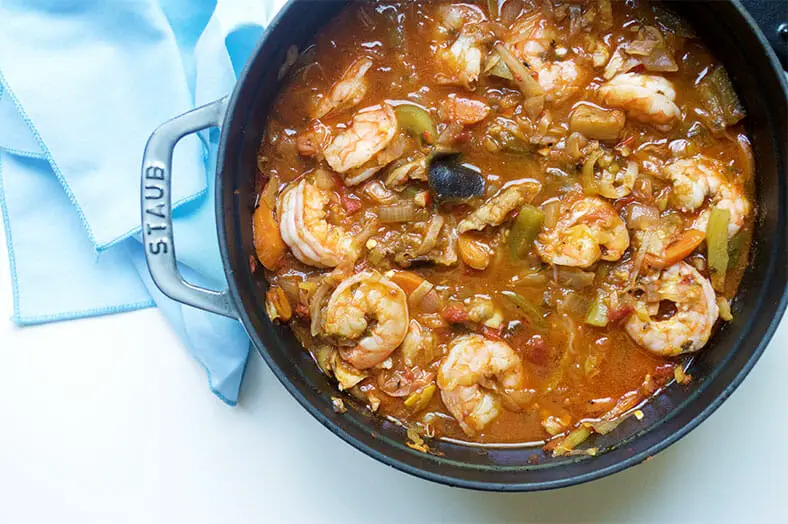Even in places endowed with an abundance of Earth’s natural resources, it’s not necessarily a “given” that a flourishing cuisine will develop.
The coastal African country Gabon lends is a perfect example of this. It seems like much of Gabon’s cuisine developed on the fly with the help of external influences and historical passersby.
And yet, what’s resulted is a contemporary Gabonese cuisine that is quite unlike anything else. Take one bite of poisson salé, or ndole, or any other dish, and you will quickly understand how special and unique the cuisine has become.

Poisson Salé, Libreville and a Growing Economy
Being the history buffs that we are, we always try to dig as deeply as we can into the culinary history of our host cuisine. Sometimes that endeavor can present quite a challenge.
Gabon seems to have a relatively opaque food history and not one with a resoundingly strong tradition to fall back on, unlike its distant African cousin, the Ivory Coast.
As is the case for the poisson salé recipe, much of the Gabonese culinary development came from the town of Libreville… and outside of the kitchen itself.
Gabon’s Landscape
First, let’s take a quick trip down Gabon’s “memory lane.”
Relative to other coastal African nations and kingdoms, Gabon was a late-comer to the globalized scene. The overall landscape of the country is one of dense, isolating rainforests, and the Ogooué river – the main river that traverses all of Gabon – has some very strong currents, making it nearly impossible to navigate in some particularly treacherous areas.
The characteristics of the land made it inherently difficult for various settlements to interact with one another. While Pygmies and Bantus dominate the pre-European history of Gabon, different groups with various diverse tribal and linguistic affiliations have always been a part of the nation’s local fabric. All told, Gabon still has over forty distinct ethnic groups (though most of Bantu origin) formally recognized today.
The land also made it difficult for the Europeans to make much of an early impact on the country as they did in places like Mozambique and Kenya, for example. While there’s evidence to suggest that the Portuguese first made contact with local Bantu tribes as early as the 1470s, Gabon’s modern era starts more towards the 19th century with the arrival of the French.
You May Also Like…
If you love seafood dishes, check out our other popular recipe on poisson cru – a ceviche coconut salad. Or, if you love seafood stews try our coconut conch soup (sopa de caracol), or our other seafood stew Croatian style, made with shrimp, mussel, fish steaks, tomatoes, and leek.
Libreville
Prior to the French arrival, Gabon was not immune to the ravages of the slave trade that the Europeans installed along the west coast of Africa. For at least 300 years after initial contact with the Portuguese, various Dutch, French and Portuguese explorers captured local people along the Ogooué basin and shipped them either back to Europe or to the New World.
With the gradual abolition of the European slave trade, the French sought to create a protectorate over coastal areas in order to maintain their commercial interest in the region, keep pace with the British and crack down on the Atlantic slave trade. In 1839, the French, through deals with local Fang chiefs, secured a strip of coastal land in the Gabon Estuary that would eventually become the city of Libreville.
In 1846, the French captured a Brazilian ship carrying slaves bound for sale in Angola. Upon freeing the slaves, many of them settled in this coastal strip and founded the settlement of Libreville, meaning “free town” in French. Over the next several decades, the French developed Libreville from a sleepy outpost into its commercial center and headquarters for territorial expansion.
As the French increased their dominance and influence in both the Ogooué and Congo River basins, Libreville economic influence grew as well. Between 1886 and 1904, Libreville was the capital of French Equatorial Africa, a colony that included parts of modern day Cameroon, Chad, Congo and Gabon.
Economic Prosperity… and Culinary Dependence
By the creation of French Equatorial Africa, Libreville had developed into an administrative and commercial hub, although this came at the detriment of the local agricultural sector. Despite incredibly fertile and nutrient-rich soil and lands, the colonial government did little to cultivate local food production and to help local farmers.
Instead, the French preferred to focus on industries that exploited the local natural resources of Gabon, such as rubber and timber. In a sign of protest against these practices, the local Mpongwe tribes protested and actively abstained from participating in the workforce.
To counteract the lack of Mpongwe workers, the French colonial government incentivized outsiders, and brought in a host of European and African immigrants as laborers. With this infusion of non-locals and a sharp focus on non-agricultural industries, the food preference and corresponding food supply for Libreville became dependent on importing foreign goods for consumption.
General societal perception also made matters worse vis-a-vis foreign food. As the local incomes and wages grew for everyone, the notion of eating locally grown foods – let alone participating in the agricultural work yourself – became undignified and viewed as lower class. The local preference (even for the Mpongwe) instead was for foreign foods and rationed goods, even in times of food shortages and short supply.
Impact on the Gabonese Cuisine
As a result of this “external preference,” much of what is modern Gabonese cuisine is an aggregation of outside influences. There aren’t truly uniquely Gabonese cooking methods or preparations, and many of the ingredients (like salted fish in poisson salé) have distinctly European, French and British roots to them.
Still, even with all the external and imported influence, what’s resulted is still a uniquely Gabonese flair into the creation of each dish as you shall see with poisson salé.
About the Recipe

For the most part, poisson salé follows a fairly standard recipe path as any other stew would… except for the salted fish. It’s a very unique ingredient that, if not handled properly, can ruin the entire dish on its own, so it’s important to work with it the right way.
The best way to work with salted fish is to pre-soak and pre-clean it of as much of the salt as possible. When you purchase it from the store, it will feel almost like a rock hard block of dehydrated fish meat, and we can promise you that just one try of its salted coating will obliterate your taste buds for a little while.
It’s thus paramount to start by submerging it in some cold water for at least an hour. Most recipes you might find suggest soaking it for 6+ hours or even the night before and changing the water periodically, but we found that an hour is just enough soaking needed in case you’re making this last minute.
While your fish is soaking, you can focus on creating the stew in which it will cook and simmer.
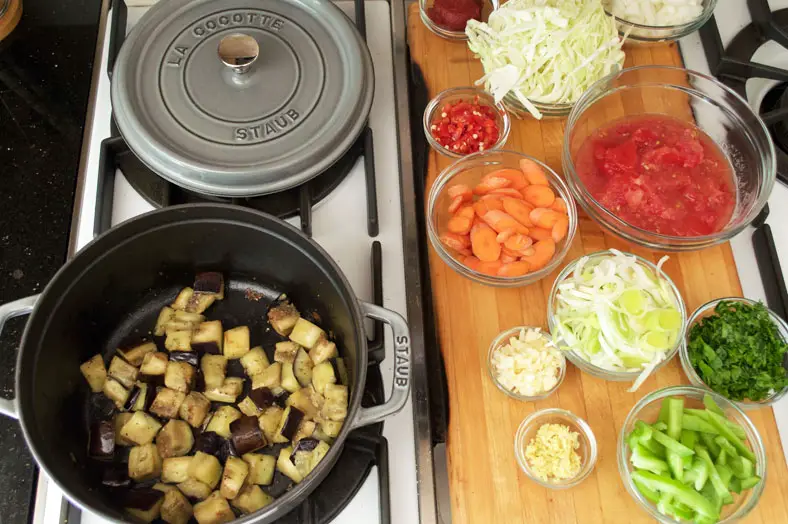
In our version, you’ll see that we added eggplant. If you opt to include it as well, you’ll want to pre-cook the eggplant down in oil before cooking the rest of your ingredients. Do this by taking your stockpot with a good glug of oil over medium heat and letting them fry for ~15 minutes with occasional stirring.
After the eggplants are cooked and removed from the pot, you start with your aromatic ingredients. The garlic and ginger kick things off, followed quickly thereafter by the likes of onions, leeks, and chili peppers. After a few minutes of cooking and sweating, you have a wonderful base for your poisson salé.
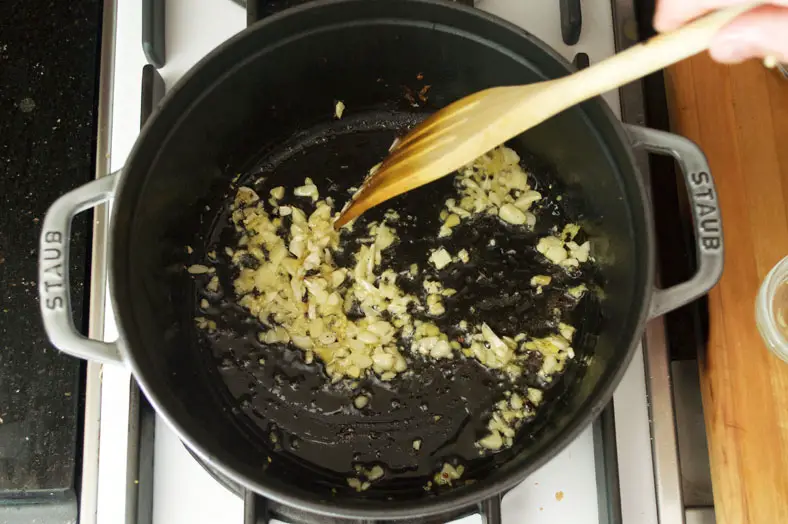
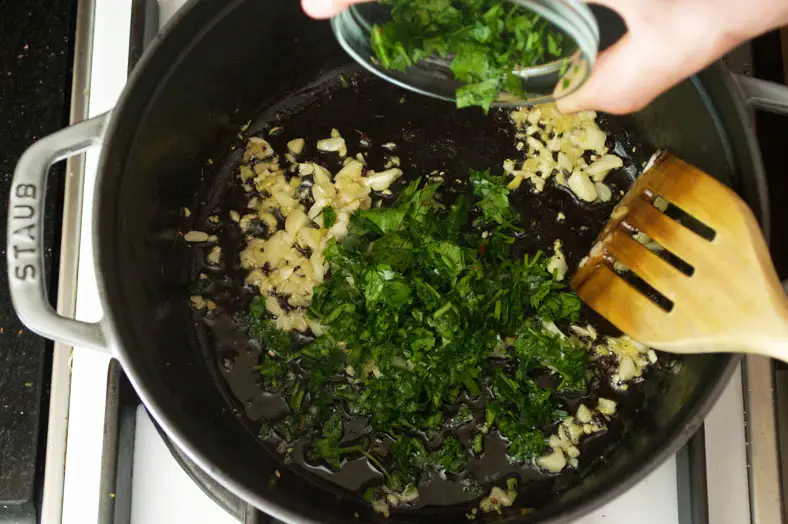

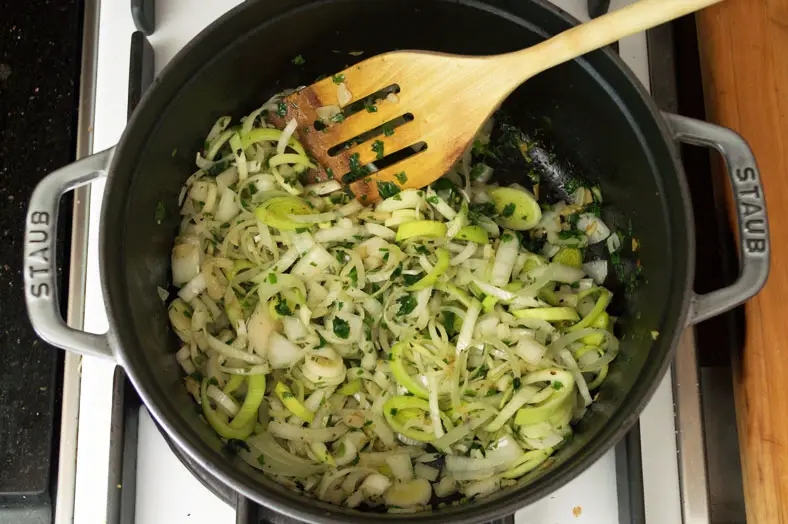

Next, we move onto turning it into more of a stew form as well as adding some more kick to it. Add in diced tomatoes (hopefully with juices intact) and tomato paste followed by some spices of your choice. Berbere spice is a great choice that immediately offers versatile flavors if you have it around, but really anything to your liking will do.

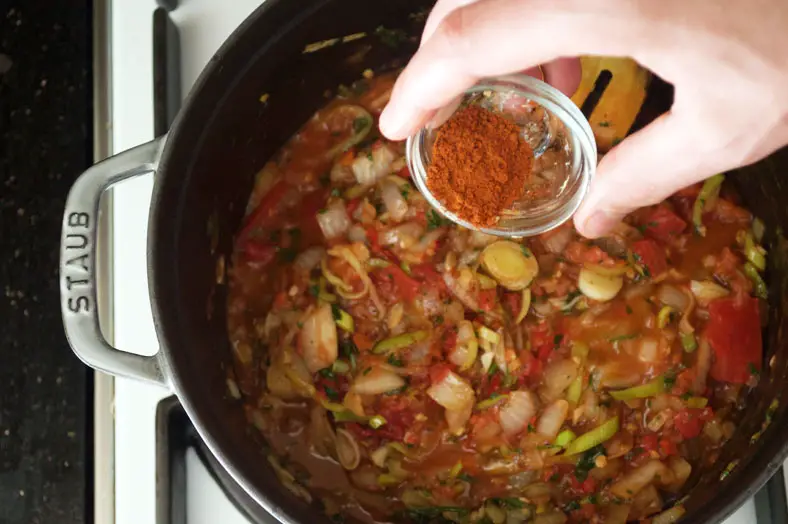

Add in and cook down more vegetables like sliced cabbage and carrots, then submerge the entire pot in either water or vegetable broth and add back in your cooked eggplant as you get the semblances of a stew.
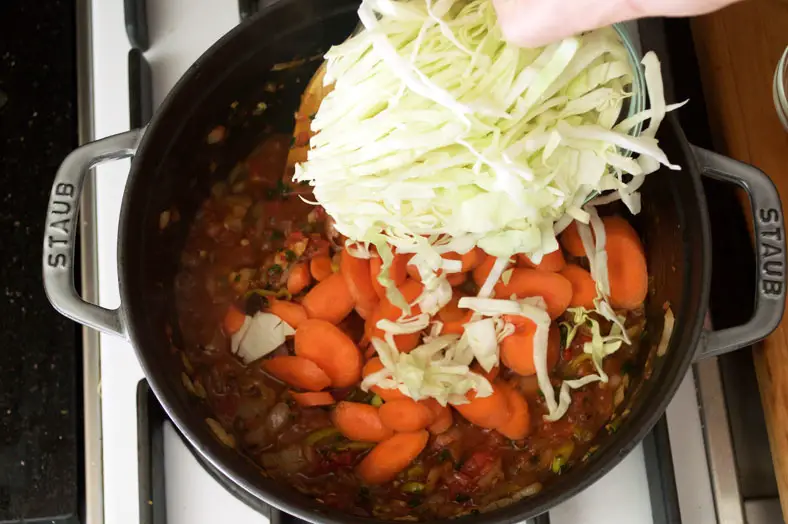
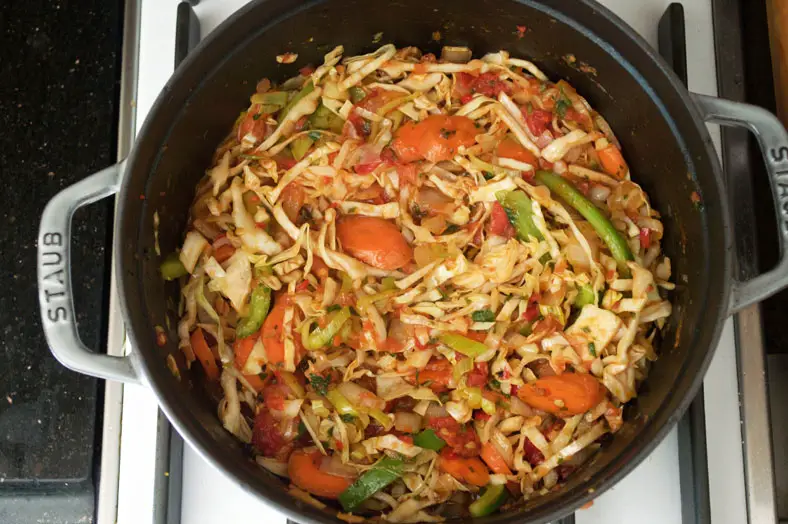
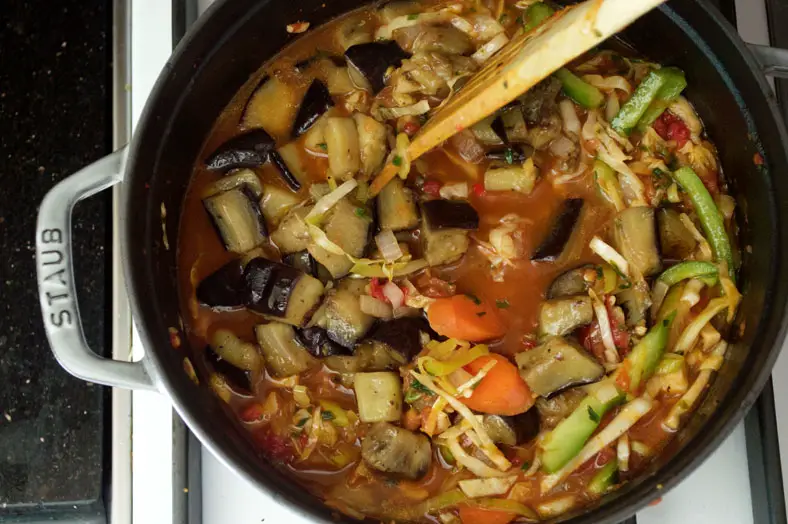
At this point, hopefully your salted cod has soaked for a long enough time. Take it out of its soaking water, rinse it under running water to clear any additional salt or other deposits off, and place it into the center of your stockpot. Submerge the fish under broth and cooked vegetables, then reduce your stovetop heat to a simmer and cook your poisson salé stew for up to 30 minutes.

If you want to add some more seafood to your poisson salé, it makes for a great finishing touch. In our case, we added shrimp towards the final 5 minutes, and we let them simmer submerged in broth and vegetables until they were fully cooked.
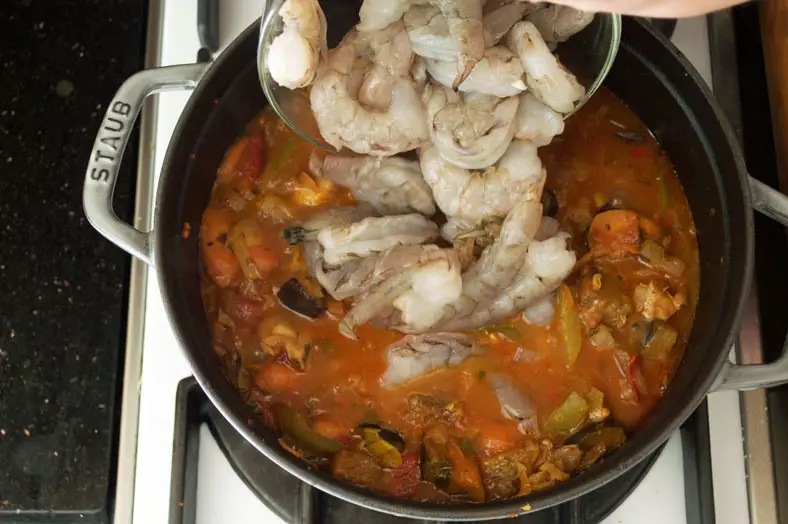
Once you feel confident all your seafood and fish is fully cooked and ready to eat, you’re done! To serve, poisson salé can be eaten with rice, foufou, boiled plantains, or it can be enjoyed on its own as a delicious standalone stew. Enjoy!

Our Take on the Recipe
Generally, we have a preference for leveraging cookbooks or blogs for our reference recipe, but we found for this recipe that it was a Gastronomie Gabonaise Facebook community that lent the most credible recipe for poisson salé and thus was our original source recipe. This was one recipe, however, that we felt at liberty to make a multitude of changes to.
For starters, we made a lot of adjustments with our ingredients for the poisson salé. We added chili peppers, bell peppers, eggplants and a whole lot more to create a more voluminous stew with flavors that we felt complimented the texture and flavors of the salted fish. We also added shrimps in at the end, which is one option for additional seafood although some recipes advocate razor clams instead. We chose shrimps mainly because they were easier to procure and less fickle to cook with.
Perhaps one of the biggest adjustments we made along the way, however, came in the spicing. Generally, Gabonese dishes might “unofficially” use a plethora of spices both to elevate the flavor and the coloring of the dishes, and so we followed suit in this principle. We learned that berbere is a very effective spice for Gabonese dishes in this regard, which is why we added it to ours.
Also, we tried our best to make the dish a little more “practical” when it came to working with the salted fish. Again, it’s a very fickle ingredient and one that could make or break this stew overall, so we learned the hard way what the limits were in using it. Still, rather than expect you to soak dried fish overnight and occasionally change its soaking water, we found that soaking it for up to an hour followed by a rigorous rinse under running water was just enough. Just be sure not to add any salt to your stockpot… it won’t need it!
In the end, poisson salé was a fantastically delicious window into the enigmatic and intriguing Gabonese cuisine, and it’s a perfect introduction into working with salted fish.
Enjoy!
What would you add to your poisson salé? Comment below!


